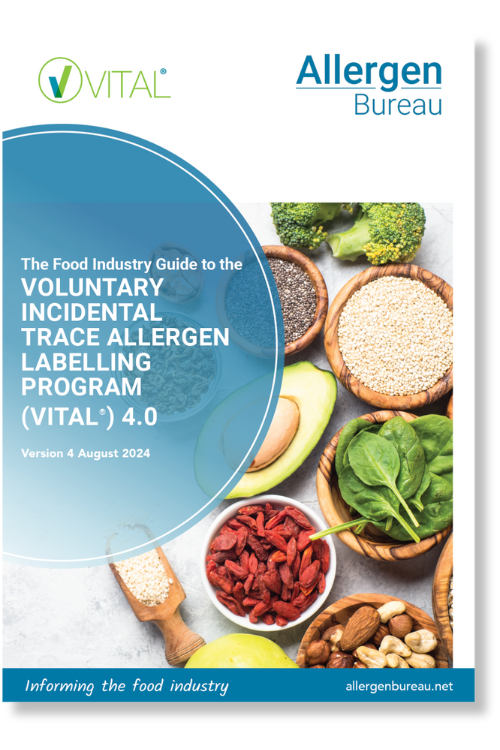The Allergen Bureau’s VITAL® (Voluntary Incidental Trace Allergen Labelling) Program is a standardised allergen risk assessment process for food industry.

Carrying out a VITAL risk assessment using the VITAL tools – including VITAL Online – assists a food company to thoroughly review the allergen status of all the ingredients and the processing conditions that contribute towards the allergen status of the finished product.
The VITAL Program produces a ‘labelling outcome’ that summarises the food allergens present in a food due to intentional inclusion as part of a recipe and where food allergens, present due to cross contact, should be included (or not) on the label in the form of the precautionary statement ‘May be present: allergen x, allergen y.’.
Food allergens may be present in a food due to intentional inclusion as part of a recipe, but may also be present due to unintentional cross contact. This can occur at any point in the supply chain due to the type of ingredients used or through the use of shared equipment and processes during manufacture.
Even under conditions of Good Manufacturing Practice (GMP) cross contact may be difficult to eliminate entirely, leading manufacturers to use precautionary advisory statements to advise allergic consumers.
The VITAL Program was developed to make a single simple standardised precautionary statement available to assist food producers in presenting allergen advice consistently for allergic consumers.
The VITAL Program not only assists food producers in assessing the potential impact of allergen cross contact in each of their products but also specifies a particular precautionary allergen statement to be used according to the level of cross contact identified.
VITAL allows the assessment of likely sources of allergen cross contact from raw materials and the processing environment, plus an evaluation of the amount present and a review of the ability to reduce the allergenic material from all contributing sources.
VITAL also provides for ongoing monitoring and verification of the risk assessment process to ensure any changes to the level of risk are acted upon without delay.
We have a range of guides to support the use of VITAL, Please visit our VITAL Resources section.

